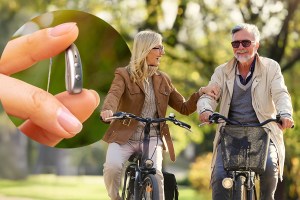Ah, summertime. When the living is easy, the air is warm, and – if we’re not careful – our fragile skin can take a pummeling from the sun’s ultraviolet rays.
So that means sunscreen. And lots of it. One way to determine which type of sunscreen you should use is by checking a product’s SPF. But what does SPF mean?
What does SPF mean?
Sunlight contains two types or rays – UVA and UVB – that can cause sunburn and skin cancer, according to the American Academy of Dermatology. UVB rays are the primary cause of sunburn, but both UVA and UVB rays can cause skin cancer. Approximately 1 in 5 people will develop skin cancer in their lifetime. In 2013, approximately 72,000 Americans were diagnosed with melanoma, the most serious form of skin cancer, according to the U.S. Centers for Disease Control and Prevention.
The sun can also prematurely age and damage skin, leading to wrinkles and sunspots.
SPF (sunburn protection factor) ratings measure how much UV radiation can produce a sunburn on protected skin (i.e. with sunscreen) versus the amount required to produce a sunburn on unprotected skin. The higher the SPF number, the more protection it offers. It doesn’t reflect the amount of time you can spend in the sun before getting burned – a popular misconception, according to the U.S. Food & Drug Administration.
So just what does SPF mean? Basically, it’s is a measure of how much sunburn protection a sunscreen offers. An SPF 30 sunscreen will provide more sunburn protection than an SPF 8 sunscreen.

Sunscreen basics
So, if you’re planning on spending some time outdoors or at the beach this summer, don’t forget to bring sunscreen and apply it liberally to everyone over 6 months old. (Consult your child’s pediatrician for children under 6 months old.) You should reapply every two hours or after swimming, toweling off and sweating, and even on cloudy days.
What SPF to use? The FDA recommends using a broad-spectrum SPF 15 sunscreen for protection, but the American Academy of Dermatology recommends using a broad-spectrum sunscreen with an SPF of 30 or higher. (Broad-spectrum sunscreens protect the skin from both UVA and UVB rays.)
And don’t skimp. The average adult and child needs 1 ounce of sunscreen – the amount in a shot glass – to cover the body.
Just two more things to keep in mind: No sunscreens are waterproof, and no sunscreen completely blocks UV rays, says the FDA.
What is the highest sunscreen SPF?
Sunscreens can have an SPF rating of anywhere between 2 and 50 +. In 2011, the FDA limited the maximum SPF value to 50 + because there wasn’t sufficient data to say that sunscreens with SPF values over 50 protected any better than those with SPFs of 50.
Under the FDA’s new sunscreen rules:
- Sunscreens can be labeled “broad-spectrum” if they protect against both UVA and UVB rays.
- Broad-spectrum sunscreens with SPFs of 2-14 must warn that the product hasn’t been shown to prevent sun damage or skin cancer.
- Only broad-spectrum sunscreens with SPF 15 or higher can say they protect against skin cancer if used with other sun-protection methods.
- Sunscreens cannot use the terms “waterproof,” “sunblock” and “sweatproof.”
More ways to protect yourself from the sun
More than 85 percent of melanomas are caused by the sun’s UV rays, according to the Skin Cancer Foundation. There are other steps you can take, in addition to applying sunscreen daily, to safeguard your skin. The foundation recommends the following.
- Wear wide-brimmed hats. The majority of skin cancers are found on the head, ears and neck.
- Choose your clothing wisely. Long-sleeve T-shirts and pants cover more skin than a tank top, short-sleeve T-shirt and shorts.
- Wear sunglasses. Even your peepers aren’t immune from sun damage: It can cause vision loss and other damage, as well as eyelid cancers. The foundation recommends wearing sunglasses year-round whenever the sun is out. Look for a pair that blocks out 99 to 100 percent of UV rays.
- Seek out good shade. You can sit under a tree but still receive a fair amount of skin damage because of scattered UV rays. Only deep shade – where you can’t see the sky – offers the best protection. Trees with dense foliage are best, and be wary of umbrellas – the shade they offer can vary wildly in SPF protection.
- Protect your skin, even in the car. Glass only blocks UVB rays. And a study in the Journal of the American Academy of Dermatology found that 53 percent of skin cancers in the U.S. are found on the left side – the driver’s side – of the body. The foundation recommends affixing special UV-blocking window film to your windows. And try to keep that left arm inside the car, not propped up on your open window.
So have fun this summer! Go to the beach, hit those cookouts and spend some time by the pool. And apply sunscreen liberally and often to keep you – and your loved ones – safe from summer’s harsh rays.
Headed to the beach or on a sun-drenched road trip? Make sure you have the right amount of coverage at AAA.com/Membership.















